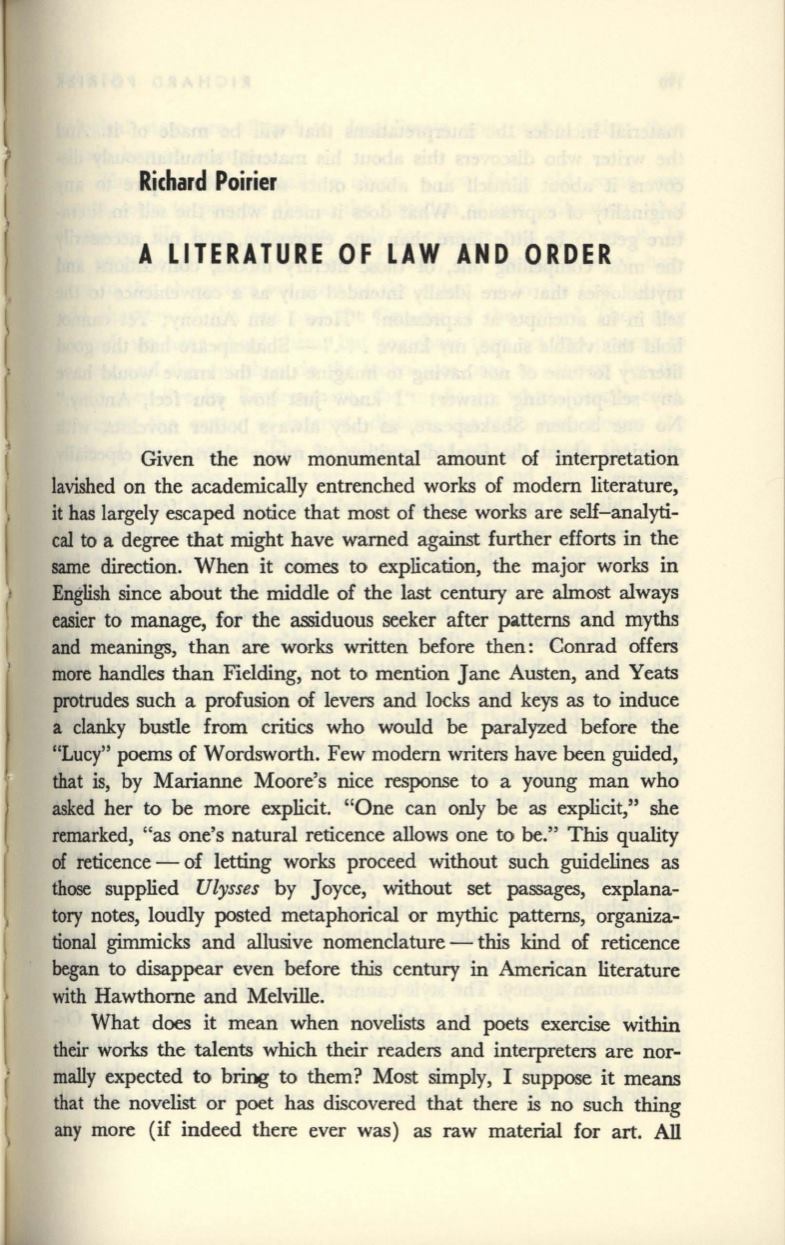
Richard Poirier
A LITERATURE OF LAW AND ORDER
Given the now monumental amount of interpretation
lavished on the academically entrenched works of modem literature,
it
has largely escaped notice that most of these works are self-analyti–
cal
to
a degree that might have warned against further efforts in the
same direction. When it comes to explication, the major works in
English
since about the middle of the last century are almost always
easier to manage, for the rumduous seeker after patterns and myths
and meanings, than are works written before then: Conrad offers
more handles than Fielding, not to mention Jane Austen, and Yeats
protrudes such a profusion of levers and locks and keys as to induce
a
clanky
bustle from critics who would
be
paralyzed before the
"Lucy" poems of Wordsworth. Few modem writers have been guided,
that
is, by Marianne Moore's nice response to a young man who
asked her to
be
more explicit. "One can only be as explicit," she
remarked, "as one's natural reticence allows one to
be."
This quality
of
reticence - of letting works proceed without such guidelines as
those supplied
Ulysses
by Joyce, without set passages, explana–
tory
notes, loudly posted metaphorical or mythic patterns, organiza–
tional gimmicks and allusive nomenclature - this kind of reticence
began to disappear even before
this
century in American literature
with Hawthorne and Melville.
What does it mean when novelists and poets exercise within
their works the talents which their readers and interpreters are nor–
mally
expected to bring to them? Most simply, I suppose it means
that the novelist or poet has discovered that there
is
no such thing
any
more (if indeed there ever was) as raw material for art. All


